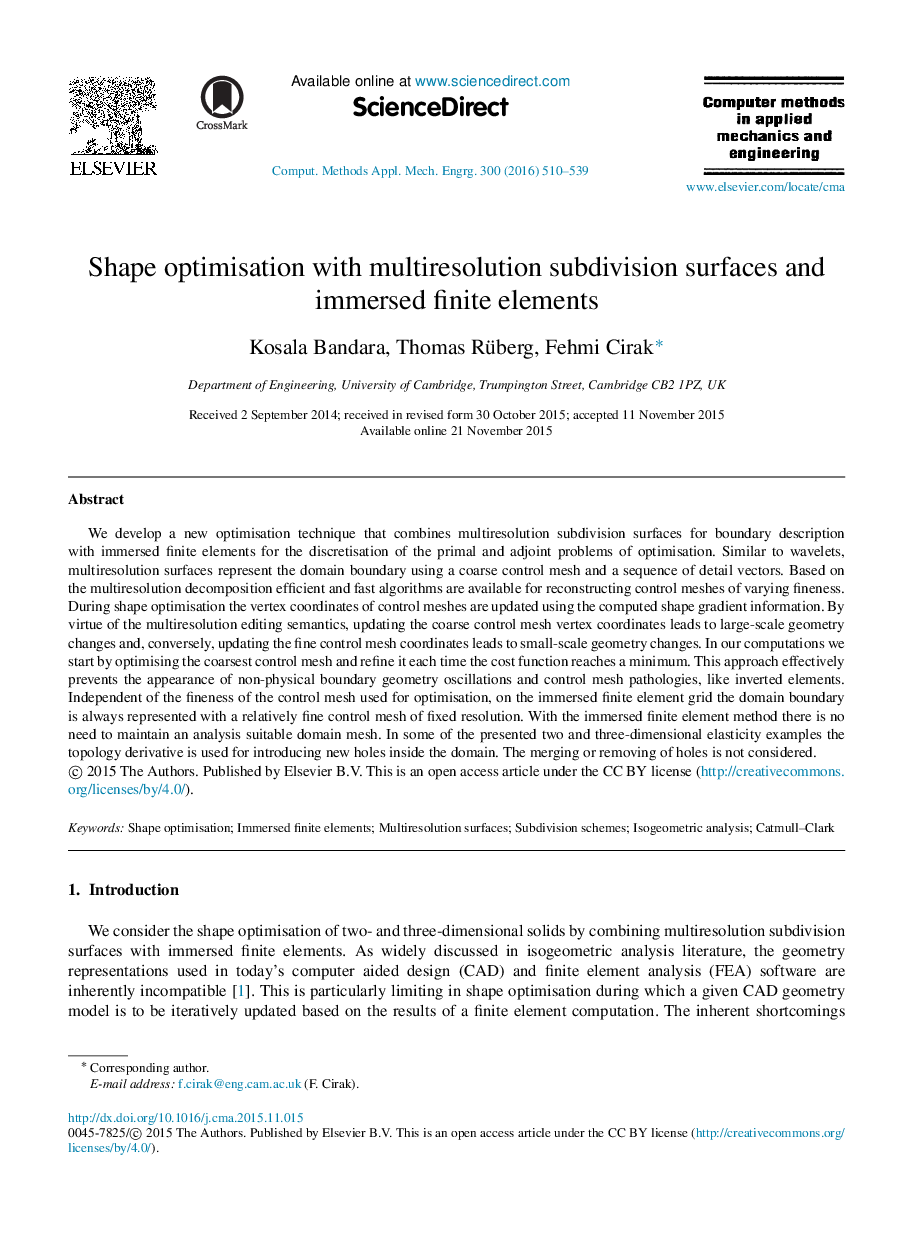| Article ID | Journal | Published Year | Pages | File Type |
|---|---|---|---|---|
| 6916474 | Computer Methods in Applied Mechanics and Engineering | 2016 | 30 Pages |
Abstract
We develop a new optimisation technique that combines multiresolution subdivision surfaces for boundary description with immersed finite elements for the discretisation of the primal and adjoint problems of optimisation. Similar to wavelets, multiresolution surfaces represent the domain boundary using a coarse control mesh and a sequence of detail vectors. Based on the multiresolution decomposition efficient and fast algorithms are available for reconstructing control meshes of varying fineness. During shape optimisation the vertex coordinates of control meshes are updated using the computed shape gradient information. By virtue of the multiresolution editing semantics, updating the coarse control mesh vertex coordinates leads to large-scale geometry changes and, conversely, updating the fine control mesh coordinates leads to small-scale geometry changes. In our computations we start by optimising the coarsest control mesh and refine it each time the cost function reaches a minimum. This approach effectively prevents the appearance of non-physical boundary geometry oscillations and control mesh pathologies, like inverted elements. Independent of the fineness of the control mesh used for optimisation, on the immersed finite element grid the domain boundary is always represented with a relatively fine control mesh of fixed resolution. With the immersed finite element method there is no need to maintain an analysis suitable domain mesh. In some of the presented two and three-dimensional elasticity examples the topology derivative is used for introducing new holes inside the domain. The merging or removing of holes is not considered.
Related Topics
Physical Sciences and Engineering
Computer Science
Computer Science Applications
Authors
Kosala Bandara, Thomas Rüberg, Fehmi Cirak,
